TechRadar Verdict
The Cooler Master MM830 is a capable mouse after some tinkering in the settings, but its high asking price sets it up for competition that’s too steep.
Pros
- +
Reliable sensor
- +
Ruggedly built
- +
Accessible thumb buttons
Cons
- -
Limited DPI increments
- -
Varied click pressure
- -
Software nuisances
Why you can trust TechRadar
Cooler Master’s new MM830 hides the old “Master Mouse” title while still stepping things up from the previous generation of mice. It looks to hit the premium segment of the market, with more RGB lighting, a higher maximum DPI, a unique D-Pad and an OLED screen.
It has a lot to offer on paper, thereby seeming to justify its $79 (about £60, AU$110) price point. But, there are a few inconvenient aspects that make it a hard sell at that price. And, the Cooler Master MM830’s value proposition gets even murkier when we consider that it’s wading into the same waters as the best gaming mice out there.
The $79 (£79, AU$129) Logitech G502 Hero steps on its toes with a near equal price, killer performance, custom weights, and plenty of buttons. Then there’s also the $79 (£79, about AU$100) SteelSeries Rival 600. And both of these are easy enough to find on sale for less. There’s even the $59 (about £45, AU$85) Corsair Ironclaw RGB that costs significantly less while performing like a big-leaguer. And, the older, $49 (£34, AU$59) MasterMouse MM520 offers a solid value proposition as well.
The MM830 is a commendable mouse in most aspects. But, since we’re not sold on the D-Pad, OLED, or 24,000 DPI setting, it doesn’t stand up favorably to the competition.
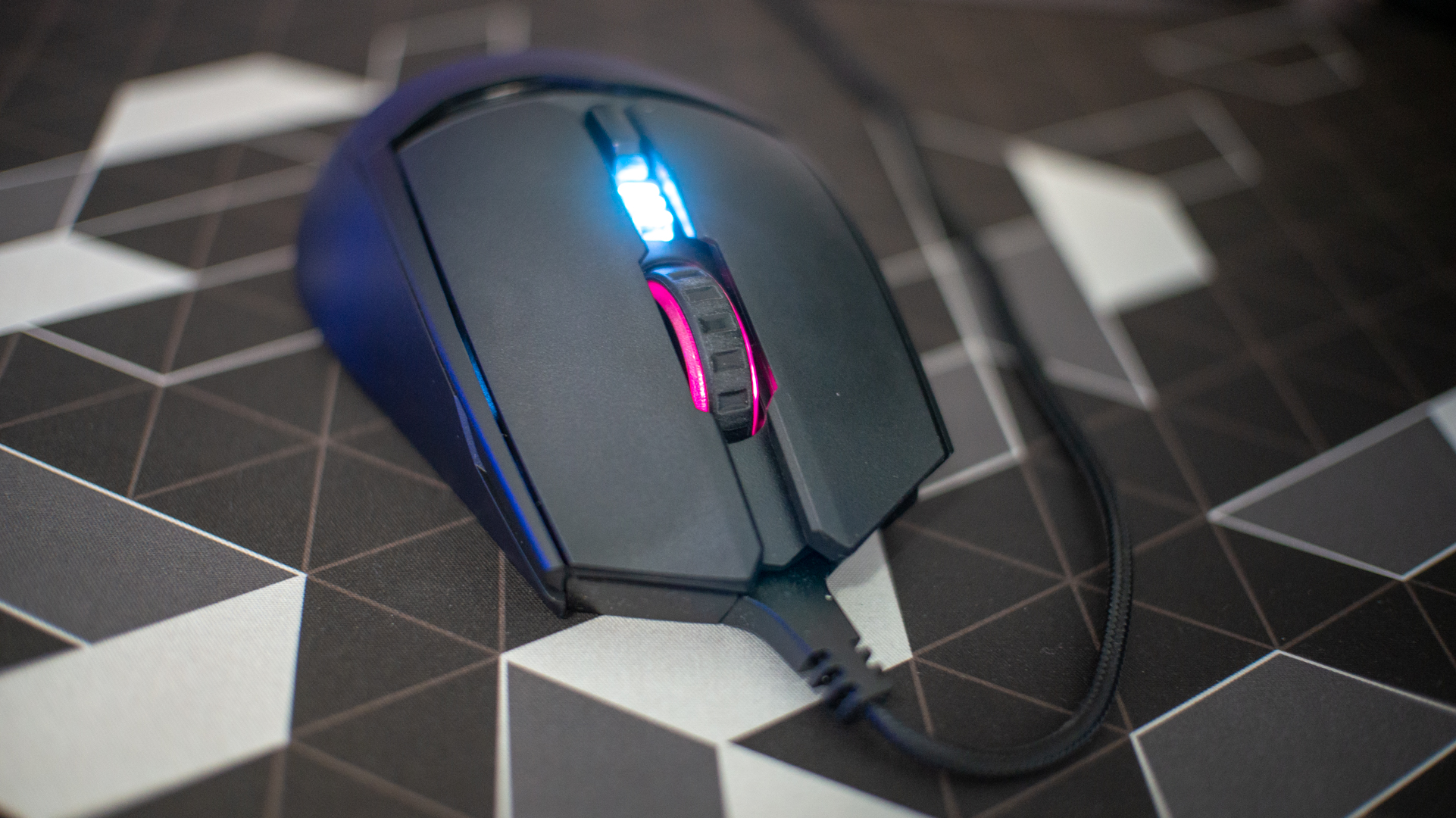
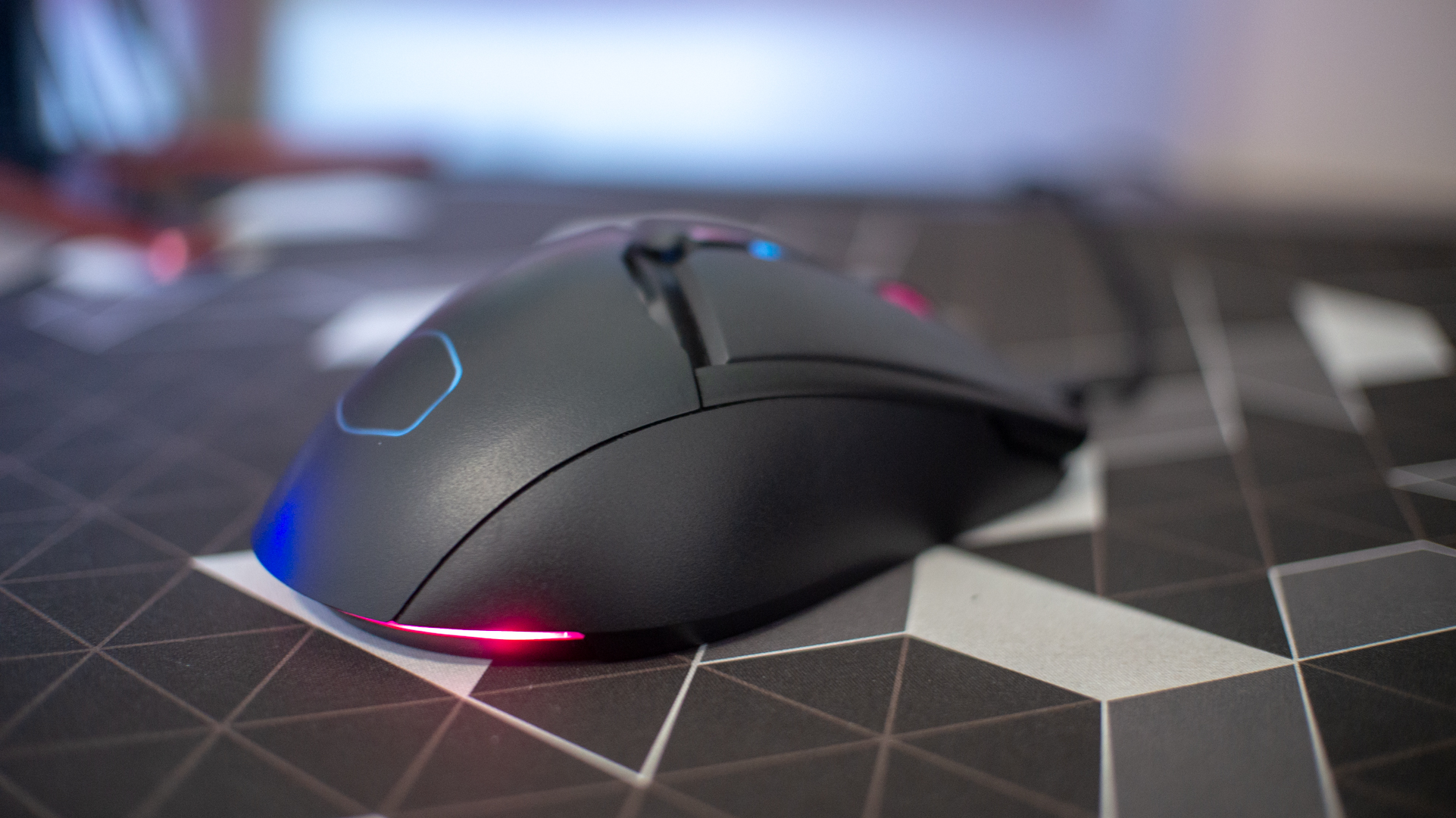
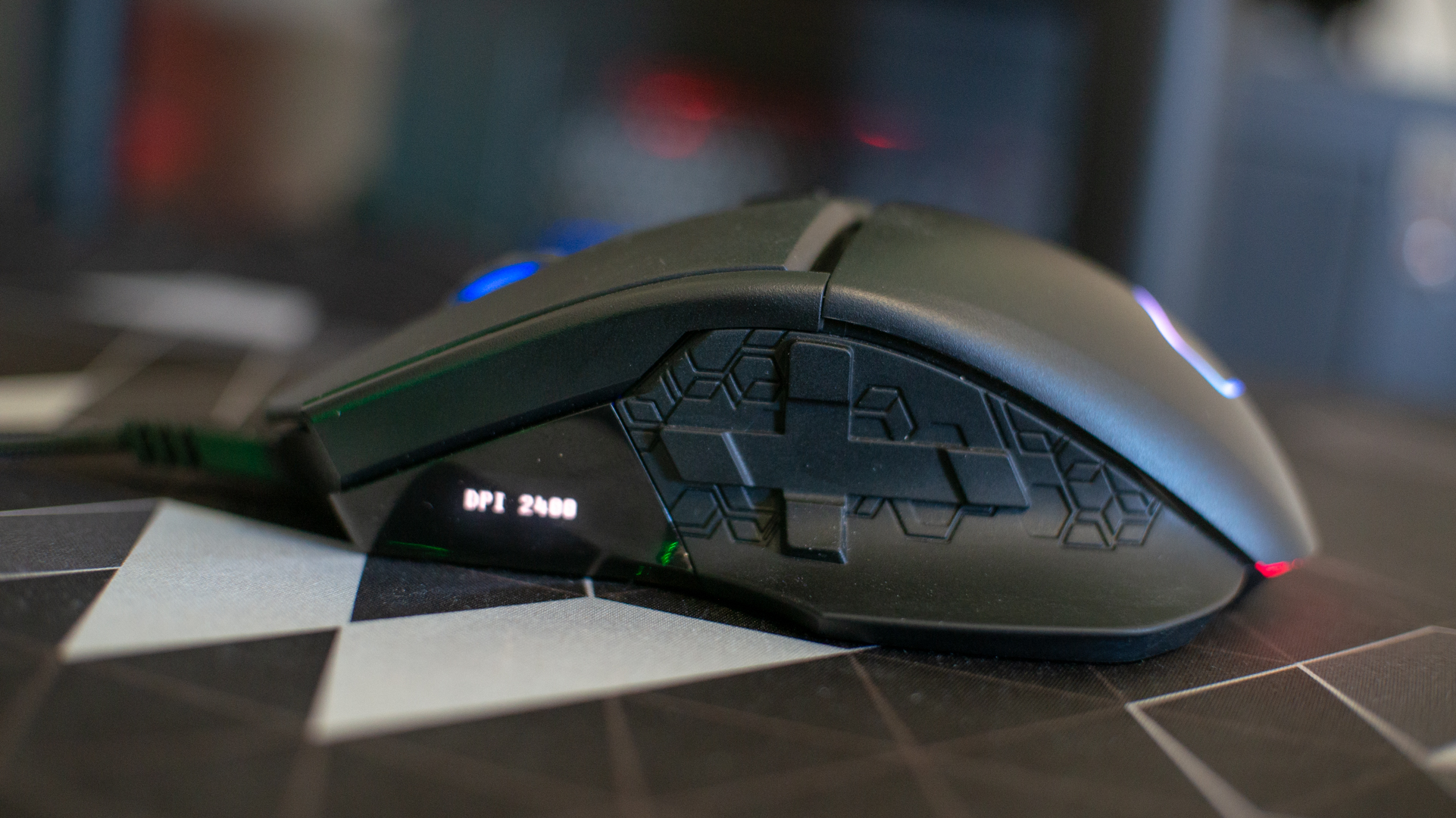

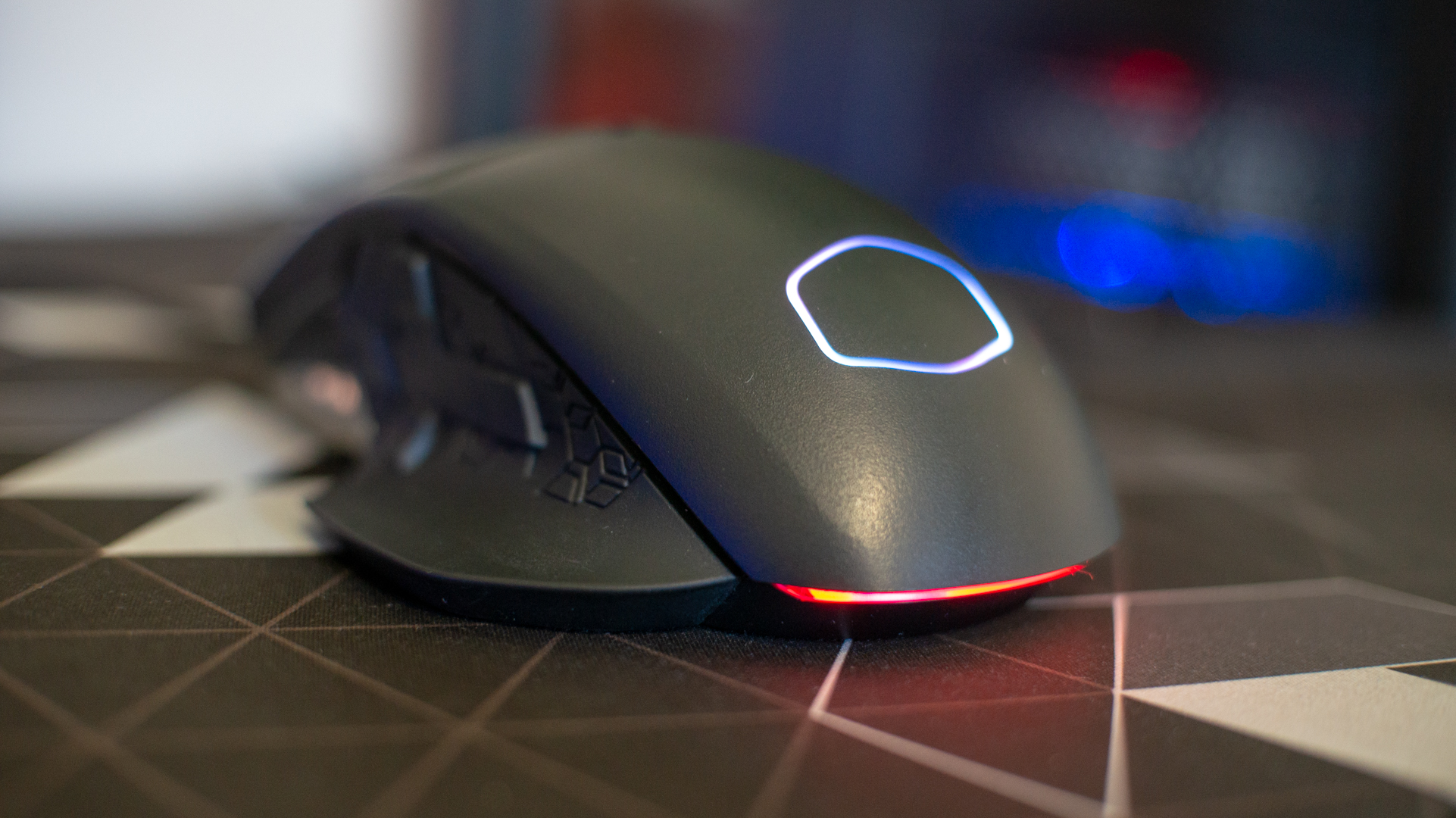
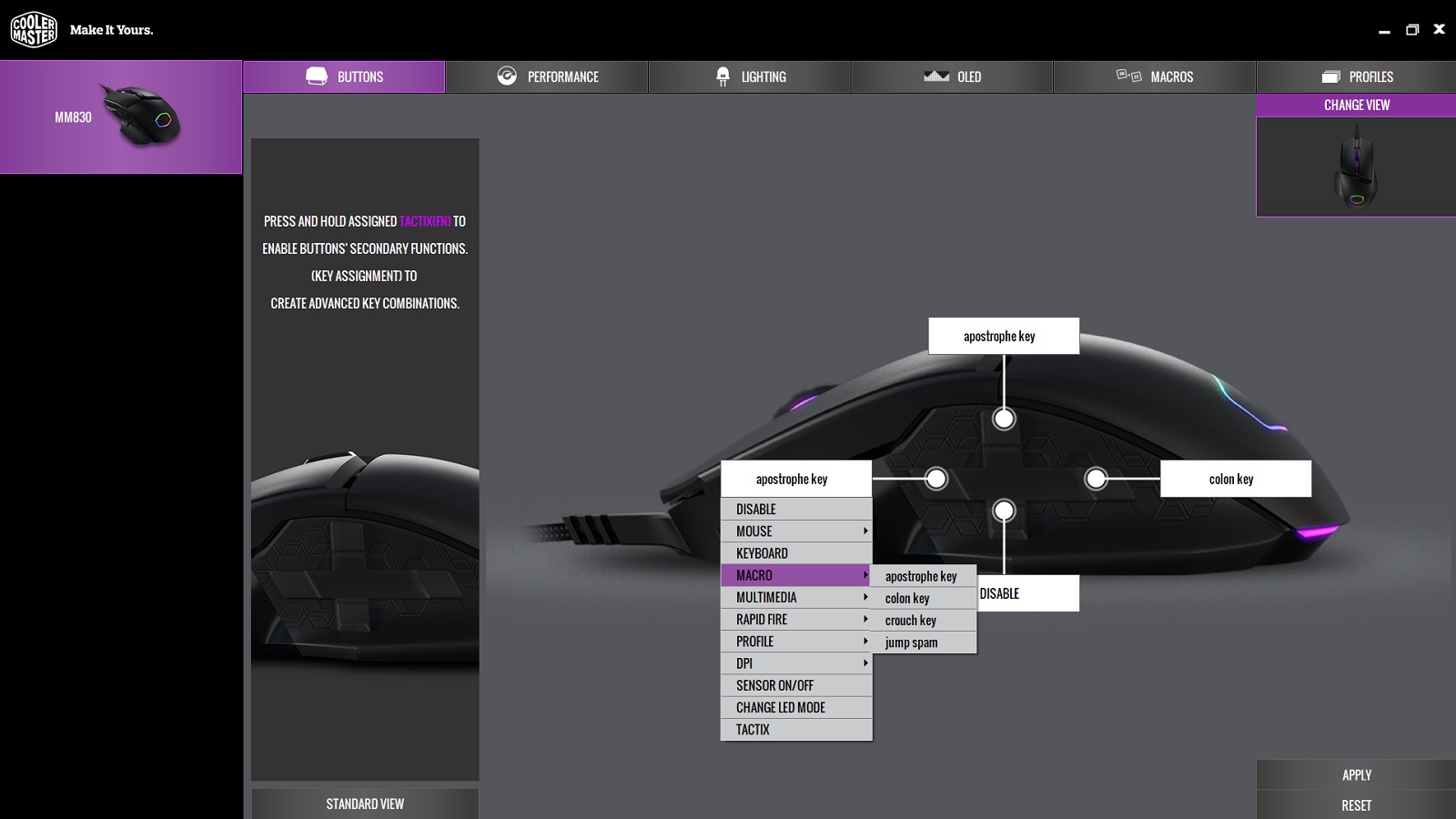
Design
We previously reviewed the Cooler Master MM520 and MM530. Those feature a sturdy build with somewhat coarse plastics, and the new Master Mouse MM830 improves on that. It still has a solid body made of tough PBT plastic, but it has a smoother feel that’s more pleasant to the touch.
We put pressure on all sides to see if it has any flex, and the MM830 doesn’t budge. Even the main mouse buttons have very little space to get underneath, making it unlikely we’d accidentally pry them off.
The mouse has split left and right mouse buttons that are separated from the rest of the body, and those are complemented by a clickable scroll wheel, a DPI switch and four thumb buttons in a D-Pad configuration.
Sign up for breaking news, reviews, opinion, top tech deals, and more.
The MM830 is actually surprisingly easy to hold. There is no grip on the right side, just a curve that offers a bit of room for the pinky finger to cling to. The D-Pad side has a somewhat grippy rubber, and the combination is just enough for some quick liftoffs. We sometimes feel our pinky slipping, but we haven’t dropped it yet.
One issue with the design is that button clicks across the mouse aren’t entirely consistent. Depending on how far forward we press on the primary mouse buttons, they take noticeably different degrees of force. At this point, this sort of inconsistency is unacceptable when other mice in the same price point offer an almost uniform click across the whole of the main mouse buttons.

The D-Pad also suffers from tricky pressure differences. The forward and back buttons are easy enough to press, though smaller thumbs may have a tough time reaching both. But, the top and bottom buttons feel like they take a bit more pressure. That difference can make it tough to reliably press them in the heat of the moment.
The scroll wheel offers decently pronounced notches, and it takes just a light press to actuate, making it a friend for melee attacks or special abilities.
Beyond the build, there’s RGB galore. There are actually 6 zones in just the Cooler Master logo (which is now a more stylish hexagonal halo rather than actually spelling out the “Cooler Master” brand), but each zone there isn’t perfectly distinct. We combined red, white, and blue, but can definitely see pink and purple where the colors blend. There’s also a light bar at the base and more lights on the scroll wheel. The DPI setting indicators also have full RGB, but aren’t customizable.
In front of the D-Pad, there’s a small B&W OLED screen that can display certain stats. It’s fairly low resolution, and mostly out of sight while the mouse is in use, so don’t plan on having it show you vital information.

Performance
Despite the curiosities of its grip and buttons, we find the MM830 generally up to the task of serious gaming. The tracking is responsive and accurate, and we don’t see it falling short of the 1ms response time and 1,000Hz polling rate promised with the precise Pixart 3360 sensor.
We’ve gone through our fair share of matches in Apex Legends, and we never feel like the mouse isn’t doing its job. Even though the primary mouse buttons have different pressure points, most hand grips are likely to reach far enough forward for it not to be a serious issue.
With tolerances to speeds of 250 inches-per-second and accelerations up to 50G, it’s no surprise that the MM830 kept up with our larger, sweeping hand movements.
We did encounter some aiming difficulties, though, and they come down to settings. While the MM830 offers a DPI range from 100 up to a staggering 24,000, after 200DPI, we can only move up in increments of 200DPI. So, the 2,500DPI we’re so used to has to be thrown out in favor of either 2,400 or 2,600DPI. \
No ifs, ands, or buts.

It’s a minor difference, but so is the difference between landing all of our Peacekeeper shotgun pellets on an enemy and landing just some of them. (It’s also a little annoying that 4 DPI levels aren’t just allowed but enforced, with no ability to turn the others off if we, say, only want to have 1,200 and 2,400 DPI settings.)
This calls up another issue with Cooler Master’s software side of thing. Portal is not the easiest to use, and we had a tough time figuring out how to set the LEDs up how we wanted. And, whatever we set the OLED screen to display simply isn’t loaded onto the mouse. When plugged into a different computer, the OLED just shows a block of lit pixels.
The D-Pad also had some strange button mapping that some games wouldn’t recognize. While plenty of games accept Mouse 4 and Mouse 5 as standard inputs, Apex Legends didn’t recognize the default D-Pad inputs. We couldn’t simply remap the buttons to be Mouse 4 and 5 or turn them into basic keyboard inputs either. Instead, we had to create macros for keyboard presses, and then assign those macros to the D-Pad buttons. A process that was all the more tedious because of the tricky Portal software.

Verdict
After some tweaks, the Cooler Master MM830 can readily do the job it’s meant to do. We don’t like that we had to slog through the Portal settings to make it as usable as other mice, but we can respect its performance once it’s set up.
But, because the D-Pad isn’t super easy to use and other price-inflating features (like the OLED) offer limited benefit, we don’t feel like the MM830 can go head to head with similarly priced offerings from SteelSeries and Logitech.
Image Credits: TechRadar

Over the last several years, Mark has been tasked as a writer, an editor, and a manager, interacting with published content from all angles. He is intimately familiar with the editorial process from the inception of an article idea, through the iterative process, past publishing, and down the road into performance analysis.
